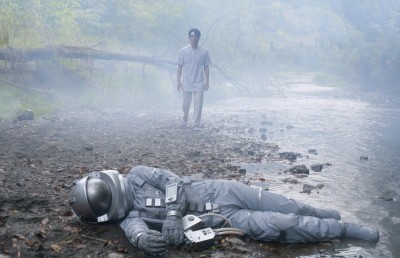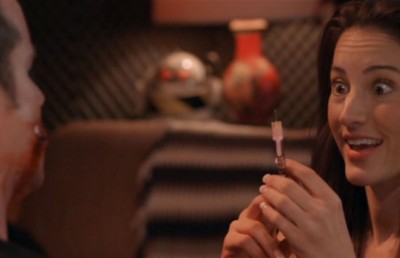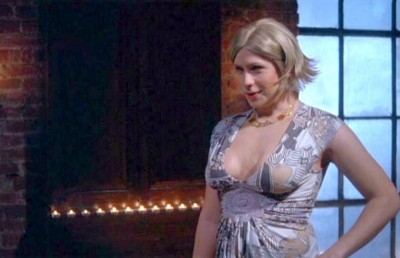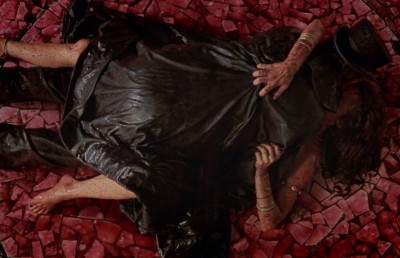Fantasia 2009 Report 1
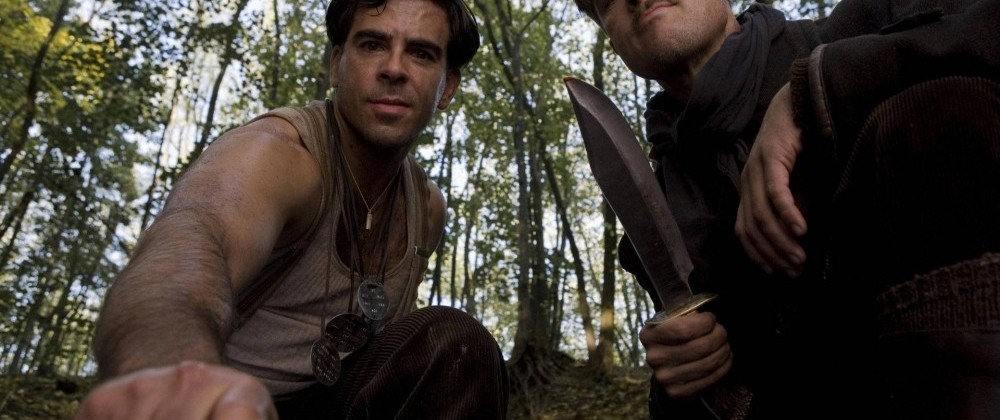
Fantasia 2009 closed with the surprise Canadian premiere of Inglourious Basterds. As you know by now, the film revolves around the infiltration of an exclusive film premiere, and with tickets selling out 30 minutes after their release this screening of Inglourious Basterds brought art and life together in ways both wonderful and infuriating. The insane popularity of the premiere prompted the organizers to severely limit the number of media they would allow into the room, leaving the ticketless public and low-ranking journalists to hatch our own schemes of infiltrating the highest security screening this festival has ever seen (complete with bag checks and infrared cameras scanning for illicit recording devices). Alas, having not yet been inspired by the film’s depiction of unlikely underdog successes behind enemy lines, I chickened out on all the semi-hatched schemes I had been devising to get myself into the room by any means necessary. And so I succumbed to being scalped on the street, snagging one of only four tickets to have been listed for sale on Craig’s List. How much? FIFTY DOLLARS. I must be crazy. Why would I pay $50 for an $8 ticket when I could go to the press screening for free, and the film opens in theatres in less than a month?

The answer: this is FANTASIA! To see a movie with a Fantasia crowd is to see it like no other way possible. So many of the films that play this festival benefit amazingly from the energy of this now world-renowned Montreal summer crowd. And although a Tarantino film has never played the festival before, the Fantasia crowd adores his work, all of which would have been at home here for his continuing fanboy commitment to engaging with the cinema of genre. Indeed, I have written extensively about the Fantasia/Tarantino connection in my previous Fantasia coverage. Kill Bill Vol. 1 was in the theatres during Fantasia 2007, and fittingly so. More than any of his previous films, Kill Bill engaged with exactly the type of genre work that fuels Fantasia, and it did so by paying loving homage to this work, while striving to step it up a notch. And last year, Tarantino had a cameo in Takashi Miike’s Sukiyaki Western Django, and as I wrote in my coverage, the crowd went wild when his character declared himself an Otaku at heart. If Tarantino lived in Montreal, he would be at Fantasia constantly. I guarantee that. So it is only fitting that this year, at long last, Fantasia gets its very own Tarantino screening, and there was no surprise in how fast the tickets went.
You’ve all seen the film by now, and though I think it’s his best film to date, I don’t want to add much to the barrels of ink that have spilled over this film in the months following its release. Political and ethical questions aside, the film marks an important step in his evolution as a genre filmmaker. His films have been getting gradually more reflexive, and Inglourious Basterds is his most honest work to date in acknowledging the fact that his movies are about movies, plain and simple. He sustained some backlash after Reservoir Dogs and Pulp Fiction for clearly borrowing heavily from other films – like the Hong Kong actioner City of Fire in the former – but without overt acknowledgment within the text of the film. For those in the know his influences were clear, but for most he seemed like a brash and original new force on the scene. And indeed he was, precisely for the audacity with which he embraced the “I can do this too!” attitude that is a staple of the stories surrounding his days as a video store clerk. Indeed he has proven that he can do it too, but his talent lies not as much with traditional concepts of the inspired genius but rather in a productive engagement with genre. Initially, he seemed reticent to make his influences an overt part of his films, happy to accept accolades that put him up on the pedestal of originality. But after the success of Pulp Fiction, it seems that Tarantino was able to move past the “I’m an artist in my own right” stage and start to acknowledge his influences more directly. Jackie Brown stepped his reflexivity up a notch as an overt homage to the 70s work of its star Pam Grier, with a credit sequence clearly intended to re-create the films he was emulating from the past. Then came Kill Bill which, for the first time, seemed entirely structured around a series of homages to specific films from the Japanese Samurai, Hong Kong Kung-Fu and Italian Western genres. The main thrust of the discussion behind these films was all the influences that went into them, and their popularity spawned new distribution routes for many of the works that he was borrowing from. Death Proof went further still by working references to the films he’s emulating into the storyline itself: a pair of stuntwomen on a quest to test drive a Vanishing Point Dodge Challenger through the deserted highways of the American mid-west.
Enter Inglourious Basterds, ostensibly a “re-make” of Enzo Castellari’s 70s film of (almost) the same name. In title alone, Tarantino’s latest film announces that it will be his most self-referential to date. But as those of us who enthusiastically sought out the original Inglorious Bastards know, Tarantino’s film is a re-make in name only. But as a film that announces itself as, in some way, about film, Inglourious Basterds is finally free to be as reflexive as it wants, part of the genre system that gave rise to it in the first place. The film disturbed many because of Tarantino’s choice of such serious real-world subject matter, but there is no attempt at engaging with the reality of historical events here. Rather, the film engages with the history of movies. His characters make movies, project movies, talk about movies, and watch movies. And as they do all this, Tarantino continues his homages to the Western genre, while taking us on a tour of the world of WWII propaganda filmmaking and its influence on film culture of the 1940s. As such, it is Tarantino’s most honest film to date, as well as his most engaging.
And Inglourious Basterds follows the high standards for action set-pieces he started with Yuen Woo-Ping’s martial arts choreography in Kill Bill and the old-school approach to stunt driving in Death Proof involving, in Tarantino’s words, “real cars being driven real fast by crazy fucking people.” Though the ethically charged nature of the film’s climax in the burning cinema has prevented most commentators from appreciating its aesthetic wonders, it is worth noting that this scene makes use of legendary pyrotechnical genius John Dykstra famous for his work on the original 1977 Star Wars film. Again, when Tarantino needed to do it, he made sure he did it right. When that cinema goes up in flames, those flames not only represent an age of silver-nitrate filmmaking long past, or the counter-revolutionary spirit of Shosanna’s cinematic hi-jacking of Nazi ideology, but is also a visceral audiovisual assault the likes of which the cinema has not seen since the introduction of CGI sucked the life out of the cinematic representation of fire.
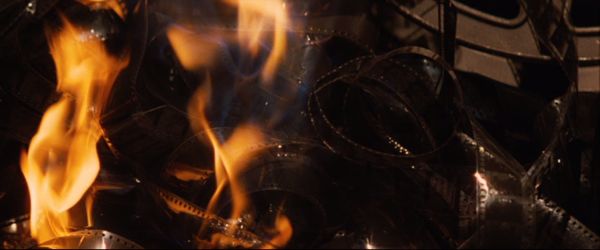
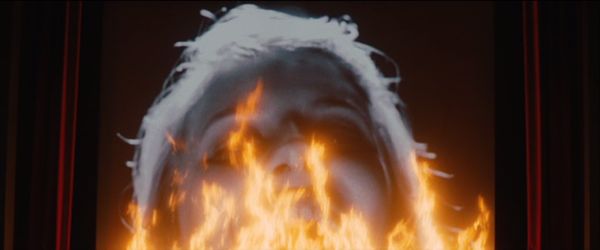


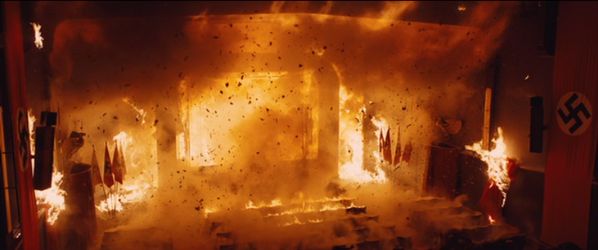
Indeed, cinematic flames have not looked so lush, or charged with a narrative import so closely tied to their material tangibility, since the climax of Andrei Tarkovsky’s The Sacrifice. And in Tarantino’s film, as the cinema fire rages, the hype surrounding entrance to this Fantasia premiere became justified. Inglourious Basterds is an homage to the history of film unlike any the world has yet seen. This is the fire that burns in the hearts of this festival’s genre fanatics, and this moment in the film marked an instance of empathy between Tarantino’s love of the movies and our own. And so Inglourious Basterds capped off a festival replete with films that embrace the love of cinema while hell bent on exploring what it means to be a vibrant voice within the framework of the genre network.

In another of this year’s Tarantino connections, Ryûichi Honda’s GS Wonderland featured Chiaki Kuriyama, notorious for her introductory role in Battle Royale and as Go-go Yubari in Kill Bill Vol.1. In a decidedly different turn, here she plays Miku, a young woman eager to find success as a singer in 1967 Tokyo. She is shut out due to the popularity of male-based “group sounds” bands trying to cash in on the Beatlemania sweeping the land, and so she joins up with three guys trying to make a go at the GS thing, reluctantly disguising herself as a boy in order to fit in.
The film opens with two eager but gullible young bandwagoneers returning from three months in the forests of Akita after the bullying members of Tokyo’s top GS band, The Knuckles, told them they would find Paul and Ringo hiding out there, offering rock lessons to anyone determined enough to find them. Humiliated but still determined to make a go of riding the Beatlemania wave, they hook up with a third bandmate and start practicing. Their first rehearsal takes place on the roof of their apartment block, a retro nod to the famous performance that ends the documentary film Let it Be. They begin to play a song written by the guitarist. As they examine the sheet music the other two pause. “Wait, this sounds just like …” “Yes, well, I lifted the bass line, and the chord structure.” “Doesn’t that make it the same song?” “Not really…” Meanwhile a record exec looking for a new “group sound” to help cash in on the success of the Beatles asks, “Where am I going to get a band that sounds like the Beatles?” And so the stage is set for the three boys, and their female fourth member, to navigate the stormy seas of commercial pop.
Within the lighthearted nostalgia trip this film offers, some rather weighty questions are posed: to what extent can a work of art be considered original, and how much engagement does it require with its peers to work within a commercial system? These are the same questions we might ask of any genre film seeking to cash in on an established audience while trying to assert its own voice in so doing.

The group is grounded through the record company’s quest to seek out fresh ways to cash in on current trends, branded The Tightsmen and dressed up in frilly frocks as an eye-catching gimmick. The futility of trying to exercise an original voice becomes the predominant theme. Later, in an interesting turn, the band eventually has to cope with changing trends, as the emphasis shifts from Brit-Pop inspired group sounds to the new psychedelic rock to which their rivals, The Knuckles, have flocked.

Once proud GS poster boys, The Knuckles now criticize The Tightsmen for being too “pop,” though their own genericism is revealed when we discover the lead guitarist is learning from a book entitled “How to Play Like Jimmy.” Everyone is a farce in a culture playing keep-up with the Joneses.

Ultimately, Miku’s female status is revealed, causing initial controversy but finally leading to a successful solo singing career when that fad takes hold in the 1970s.

The film is a lot of fun, and if there’s a hint of parody in its representation of the 60s music scene in Japan it is lovingly couched within a genuine affection for the times. Excellent visual period details are rounded out with new retro music helmed by 60s songwriting veteran Hashimoto Atsushi and producer Tsutsumi Kyohei. Like Christopher Guest’s A Mighty Wind, this musical send-up yields tunes that genuine fans of the genre can love. This ain’t Weird Al Yankovic. Like Tarantino, Ryûichi Honda is paying respects to the genres and times that influence the film, while also raising important questions about the processes of culture and the limits of genre. And in the context of Japan, these questions have special relevance.
Japan is widely known for its enthusiastic Westernization within a culture that still manages to retain its sovereignty on the world stage. And they have been particularly enthusiastic for American culture in particular. I can’t tell you how many times I’ve found CDs from American artists long out of print in North America but still enjoying distribution in Japan. And when psychedelic rock has been rather long dead over here, bands like Acid Mothers Temple keep the flame burning brightly. As lead guitarist Kawabata Makoto told Audrey Ginestet in her documentary film Dokonan following the band on tour in the US (not in this year’s festival), he is sad about the extent to which the post-war generation embraced American culture. But he blames the Japanese for succumbing to Americanization, not the Americans for imposing their culture on Japan.

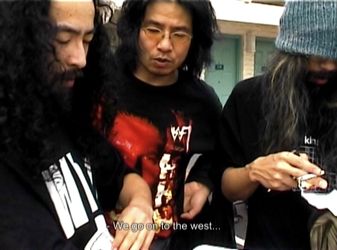
And it is clear that he loves certain aspects of American culture, and has the US to thank for the lifestyle he leads now. “I live in Japanese society,” he says, “which is led by American society. I travel between the two.” This travel between two spheres is a process of shifting identifications that marks a bizarre tension at work in Japan’s rabid consumption of Western pop culture, and this tension charges GS Wonderland with an extra poignancy. But more generally, the processes of imitation, homage, and genre-defined marketability are all on the table here, making for a thoughtful meditation on what makes the genre system work –and having a lot of fun in so doing.
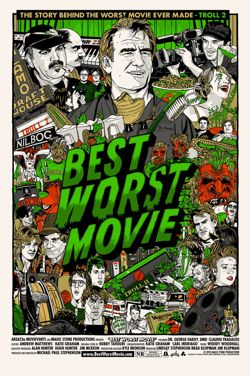
Some of the by-products of trying to establish one’s own ground in the midst of the genre climate are publicity claims that a given film will do it like no other, banking on an audience that has seen this kind of thing before, but luring them in with the promise that they’ve never seen it as good as this. And as a premiere genre festival, Fantasia just wouldn’t be the same without the hyperbole that surrounds a good portion of its screenings each year. The prolific use of absolutes in the press write-ups for many of the films featured in the festival regularly cancel each other out when read side by side. How many films can really claim to be the most shocking, frightening and disturbing we have ever seen? But that’s all part of the fun. And in 2009, the title of an excellent documentary –Best Worst Movie??– tapped into the frenzy that surrounds the cult appreciation of genre cinema, whooping up some hyperbole of its own. The film documents the rise of ??Troll 2 from the wastelands of its direct-to-video release and onto the screens of midnight showings all over the world. The premise: this is the worst movie ever made, a status that, of course, makes the film a must-see.

Best Worst Movie is directed by Michael Stephenson, the child star of Troll 2 now coming to terms with what must have been incomprehensible to him at the time. But the film’s focus is another star of Troll 2, small-town dentist George Hardy, and follows him on his tour with the film to conventions and festivals, picking up other of the film’s cast and crew along the way.
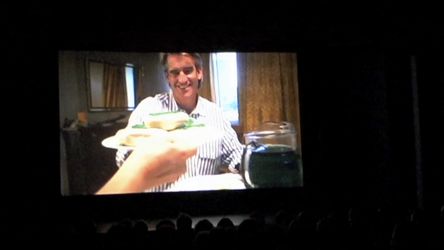
And it is an intriguing look into the world of cult films, the people that (usually unwittingly) make them, and the fans that elevate the films to the cult status they enjoy.
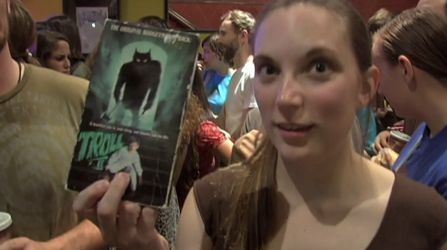
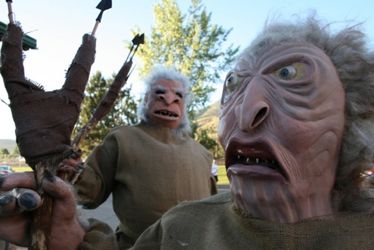
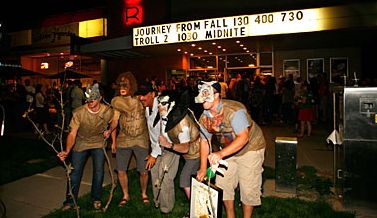
But the depth of the film comes not from images of screaming fans dressed in troll costumes with buckets of green popcorn. Rather, the figure of Hardy, smiley and affable though he is, embodies a real sadness. On the surface he claims he’s happy with his small-town life with a good job and nice community. But his taste of the limelight afforded by the discovery of his film’s cult status has given him something to think about. He rides the highs of packed houses across the US.




And he suffers the lows of obscurity at conventions in other parts of the world where the film remains unknown, tables around him packed with people while his own remains empty. In one memorable scene he tries to hustle some enthusiastic Star Wars fans into discovering the worst movie ever made, but they seem somehow unmoved.
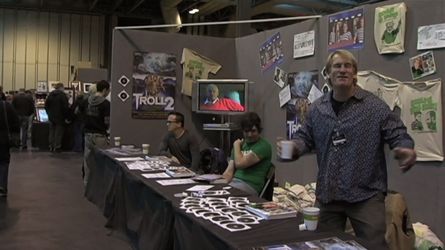

At one point in the film Hardy exclaims that he’s done with the touring and wants to settle back into his domestic life, yet he was front and center for Fantasia’s own midnight screening of the film on 35mm which was packed to the brim with all the enthusiasm you’d expect from this festival.
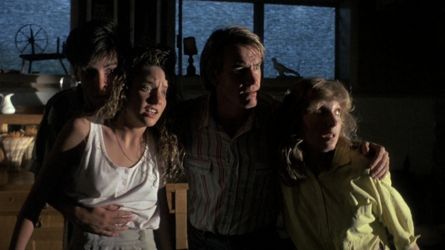
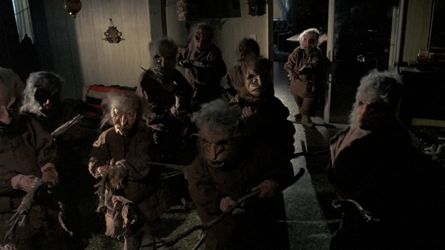
The hooting and hollering was so loud for the first 10 minutes I couldn’t hear the opening story that set the film up, but I probably didn’t miss that much. One young lady behind me just kept repeating over and over, “George Hardy is so sexy right now.” Fittingly, when Hardy took the stage for the Q+A, this same young lady asked, “How do you feel about being so sexy?” One can only hope George got laid that night.
Now, there is always a danger in setting a film up with an absolute like “best” or “worst.” And let’s be clear: there are far worse movies than Troll 2. The film plays campily enough to warrant its cult status, no question about it. But it hardly “fucks up” everything from script to post-production as one fan describes it in the documentary. In fact, I rather like the premise: a colony of vegetarians uses witchcraft to turn people into plants so they can eat them.
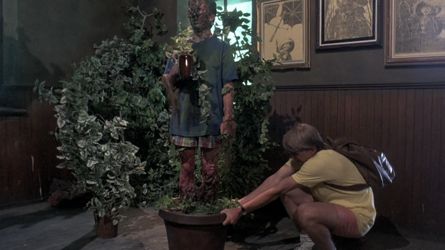
And despite a decidedly B-movie approach to costuming, acting and special effects, the film bears a good measure of competence with professional quality lighting, composition, and editing throughout. You would expect this from a director with 11 other features under his belt, as does Claudio Fragasso. The film plays much more like another fan described it: “It’s like it’s made by people who know how to make a movie, but suffered a very strong blow to the head.”
And herein lies one of the most interesting facets of the documentary. After some success touring with the film, Fragasso was invited from his home in Italy to join them in the US for a few events. With his arrival it becomes clear that Fragasso does not properly appreciate the context of his film’s re-vitalization. While Hardy is happy to embrace the fun at laughing at the film, Fragasso is clearly not, insisting that the film is good and that it has been misunderstood by these American audiences.

Fragasso displays an increasing frustration and antagonism towards his US hosts, and anecdotes from the cast suggest that he has always had a certain disdain for Americans which has been built into the work. Could it be that the film is bad because this is Fragasso’s take on American entertainment? One could argue that the storyline offers some commentary on the hypocrisy of the fad quality of American environmentalist movements like vegetarianism. But let’s not give the film that much credit. After all, Fragasso did sign the film “Drake Floyd” in apparent recognition of the need to disown the project. But in hindsight he seems hell-bent on defending the film. “It’s an important movie,” he says, “about eating. Eating, living, and dying.” In the end I sympathize with Fragasso a little bit, for this isn’t the worst movie ever made. But perhaps it is, in fact, among the best of those movies that are truly bad enough to be good. Bad enough in a good way to sustain a Fantasia midnight crowd, that much was clear. And the combo package of Troll 2 and Best Worst Movie allowed us to revel not only in the glory of the film itself, but also in the processes by which such a film comes to be revered, giving us the opportunity to reflect a little bit on our own love of genre fare and what motivates our involvement in one of the most enthusiastic festival crowds in the world.

Another instance of a film elevated by grandiose claims was the Montreal premiere of Buddy Giovinazzo’s 1986 film Combat Shock, presented in the presence of the director with his personal 16mm print of the uncut version. One of the hotter tickets at this year’s festival, the film has been hailed as one of the most disturbing in cinema history. Quoting Mitch Davis’ catalogue summary: “this is one of the most upsetting films you will ever see … almost unendurably disturbing in its impact. Its violence will make you want to throw up and die.” Unfortunately, this was one case where the hyperbole common to the Fantasia catalogue was wildly out of whack, at least in my humble opinion. The film concerns ex-Vietnam vet Frankie’s descent into the squalid madness of big city poverty, where the inability to support his wife and newborn baby (deformed from Frankie’s exposure to chemicals in the war) thrusts Frankie into the seedy underworld of junkie violence and despair in the suburbs of New York City. Indeed, the still image of Frankie’s haggard face in a dirty kitchen with gun to his head herald’s deeply disturbing potential. But I’m sorry folks, you can’t believe the hype on this one. Touted for it’s no-budget non-professional indie status, this is one case where you get what you pay for. The production realities prove too apparent to reconcile the seriousness of the film’s subject matter. It turns out to be a campy 80s venture reminiscent of Street Trash, complete with greaseball mafia thugs who play more like high school bullies from the original Degrassi High series, a terribly dated synth-funk score, Vietnam flashback sequences akin to something you’d find in Magnum P.I. or House II, and all topped off with some kind of baby puppet thing wailing away from the nursery.



The narrative deals with serious issues about the crumbling infrastructure of American society in the 1970s and 80s evident in the core of major US cities, and Giovinazzo cites Taxi Driver and Eraserhead as its major influences. Combat Shock, however, doesn’t reach the levels of aesthetic artistry or narrative poignancy that either of these earlier films manages. Comparing the film to Scorsese is perhaps unfair because of the greater resources at his disposal, most notably a professional cast featuring the rare brilliance of Robert De Niro and Jodie Foster, something that can’t be expected from most films, whatever the budget. Eraserhead provides a better example because Lynch had to make do with similar budgetary and professional constraints to the ones suffered by Giovinazzo, yet comes out as a far more harrowing vision of urban hell even amidst a circus of bizarre character affect. And Giovinazzo’s deformed child doesn’t hold a candle to Lynch’s legendary puppet creation. If Eraserhead seems too distanced from the realities of urban squalor to be considered a good comparison to Giovinazzo’s more realist approach, then one can easily find other films of the era that are as severe in their critique of Vietnam (i.e. The Deer Hunter) and more disturbing in their portrait of urban psychology (i.e. Maniac). And as a candidate for one of the most upsetting films we’ll ever see, a claim made without regard to the context of Combat Shock??’s original release in the 80s, the film has nothing on Mike Leigh’s ??Naked or anything by Gaspar Noé, Catherine Breillat or Philippe Grandrieux (what’s wrong with the French these days anyway?)
But the issues I raise here are all framed by the way the film has been set up, and this is the problem I am trying to identify here. Tell me this is the most upsetting film I’ll ever see, and I’ll immediately go in with a defensive mindset, armed with a bevy of counter-examples to throw across the table during post-film arguments at the bar. On its own terms, without lofty claims from the press and grandiose citations of precedent, I think the film can work very well if we don’t try to take it as seriously as has been suggested. And here we could learn something from Troll 2??’s Claudio Fragasso: when you frame a film to be as serious as this, in the presence of a director who intended it as such, people are afraid to embrace the film’s fun. But I think that bringing a sense of fun to the film’s foibles would serve ??Combat Shock much better than sitting quietly in the dark while trying to suspend one’s disbelief.
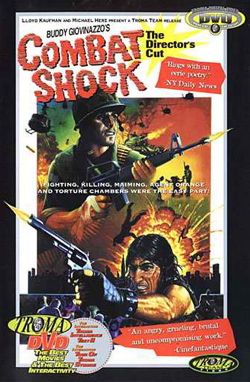
Some feel the film’s Troma DVD release doesn’t do the film justice. While it’s not as trashy as most Troma fare, I do believe Combat Shock falls within their spectrum, and have no trouble understanding why they picked it up. And association with Lloyd Kaufmann doesn’t have to undermine the film’s potential to communicate a message regarding very serious issues. Remember: the Toxic Avenger series is actually premised upon a rather stern environmentalist commentary, a message that rings through loud and clear as we cheer on the splatter, head crushing and all. And for those who want to see Giovinazzo address similar issues in a more professional context, they were free to check out his new film Life is Hot in Cracktown, also screening at Fantasia this year.
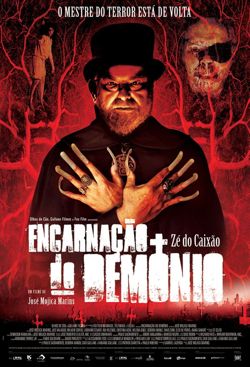
While Combat Shock suffered from poorly played melodrama in the slums of New York City, José Mojica Marins turned the dial so far up for Embodiment of the Evil that it was elevated to another plane altogether.

The third in the Coffin Joe trilogy that started with two entries in the 1960s, Marins has upped the ante on this one. Shot on location in some of the hairier districts of Sao Paolo, Brazil, the film follows the return of Coffin Joe, now an old man released from incarceration and free to exact his plans to copulate with the perfect woman and beget a long awaited son.

The torture he enacts upon the objects of his desire – testing their eligibility to bear his offspring – is deadly serious and often hard to watch.
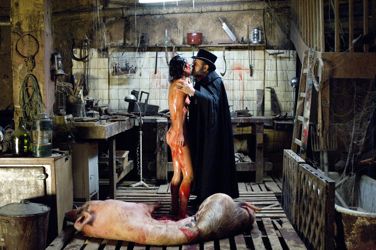
Yet there is something so silly about this character, an aged man in top hat in cape who – like the Yoda of Attack of the Clones – can barely walk and yet is skilled in hand to hand combat as he asserts his right to the streets against younger thugs.
A certain implausibility aside, the film is scary as hell – thanks in large measure to the “special participation” of Brazil’s Dennison Ramalho whose short film Love from Mother Only played Small Gauge Trauma a few years back and remains one of the very best films ever to have graced Fantasia’s screens. Embodiment of Evil has no dead moments, a consistent thread of the textured locations holding the film together, sumptuously lit and expertly photographed. Cleverly, the film incorporates footage from the 60s Coffin Joe outings to provide flashbacks as insight into Joe’s madness and life-long quest as he both revels in, and is tormented by, the joys and atrocities of his past.
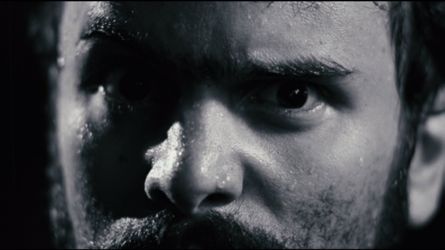
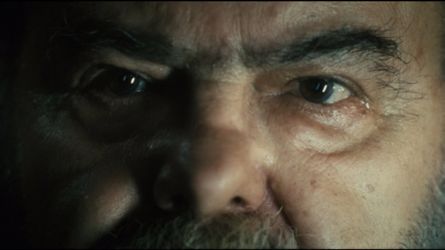
Such tactics have sometimes been the bane of sequels unable to fill their quota of screen time with new material (i.e. The Hills Have Eyes Part 2), but this is not the case here. The interjections of Coffin Joe’s maniacal face in black and white work well in drawing a line back to the past, sometimes having scenes in the present answer those from the past directly. These flashbacks also underscore the evolution of this character and his associated production values since the 1960s. [PS: These are not actual flashbacks but reconstructions. As I note in my Marins interview, this error is understandable given how well the new film ‘recreates’ the look and sound of the original film, ed.] Subversive though Coffin Joe was back in the day, Embodiment of Evil finds the man transposed into the heart of a decidedly harrowing beast while retaining his own ridiculous charm. The climax (literally) comes (pun intended) with a brilliant post-orgasmic sequence once Joe finally lets his boys fly, complete with crucifixion imagery reminiscent of Ken Russell and a glowing pink set shaped as the inside of a womb.
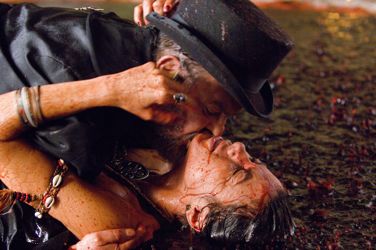


In the business of genre cinema, you have to know what you are to deliver the goods. Embodiment of Evil knows exactly what it is, and executes its mandate perfectly. This is both homage to a character introduced 40 years prior, and a genuine sequel helmed by the man himself. Marins as Coffin Joe is on point, maintaining his comic book charm even amidst the dramatically updated aesthetic rendering of his milieu.
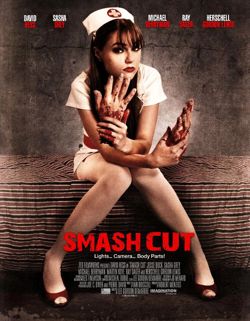
Another hot ticket at the festival this year was Smash Cut, also hovering over the line between homage/remake/sequel. Following the success of Jesus Christ Vampire Hunter, Canadian director Lee Demarbre wanted to pay tribute to B-movie splatter king Herschell Gordon Lewis. As Demarbre explained during the Q+A, he had originally thought about a remake or sequel, but found that recent such efforts to extend H.G. Lewis’ work into the new millennium have fallen flat. Instead, he went for an homage piece, new material presented in the style of Lewis. Grindhouse veteran David Hess helms a cast that also features porn princess Sasha Grey, recently aiming to parlay her XXX notoriety into a “legit” screen career.
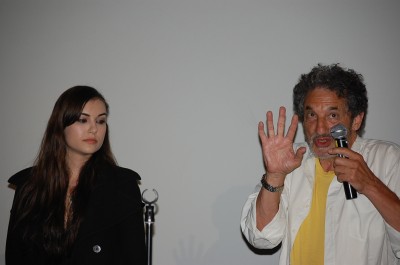
Sasha Grey and David Hess on the Fantasia stage
And so we all flocked to the screening to catch a glimpse of a real life porn star present to take questions about what it was like to work on a non-X-rated feature, and whether or not she plans to continue in the porno biz (one can only imagine how many pairs of fingers were crossed while awaiting the answer to the latter). She responded somewhat pretentiously that she doesn’t really like to draw a distinction between pornography and “regular” films because it stifles her creativity. She’ll continue to do whatever films she feels the need to do. A nice sentiment, but somewhat disingenuous in her attempt to drag her porno work into a different sphere of criticism, and this posed a problem for her appearance in Smash Cut.
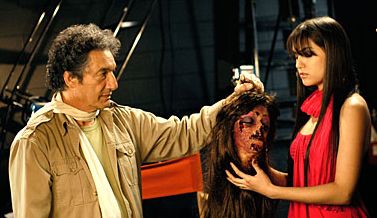
Grey’s recent appearance in Steven Soderbergh’s The Girlfriend Experience marked the world’s introduction to her clothed work, and there her affectless portrayal of a high-class New York call girl befitted the film’s theme of emotional alienation and the potential to forge meaningful relationships in the prostitution biz. The problem, however, is that this affectless quality seems to be her general persona, well on display in Smash Cut. Meanwhile all her castmates set about lively camp renditions of the material, leaving Grey to stand out as the only one in the cast that apparently doesn’t get the joke. Although held in high esteem from her colleagues about her knowledge of art-cinema (apparently she’s a big Cassavettes fan), by her own admission she had never seen any H.G. Lewis films before she was asked to join the cast on this homage. Maybe Grey’s apathetic, self-absorbed, and generally unwitting performance is intended as counterpoint to the high camp playing all around her. In fact, her character in the film is positioned as an outsider, looking into the mysterious death of her sister within the seedy world of gore filmmaking in which she does not feel at home. But even still, I felt that she was simply flat, not really in the spirit of the thing. Just along for the ride, so to speak.
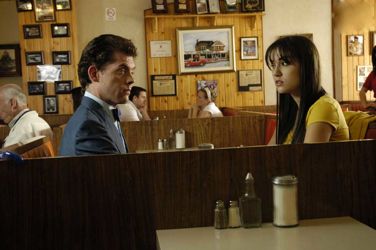
So what is she doing here? Her name clearly lends some cachet to the production, but anyone hoping for some titillation spilled over from her porno career will be disappointed. This is strictly a clothes-on affair, barely even a hint of soft-core teasing that a young woman would usually provide in a horror film.
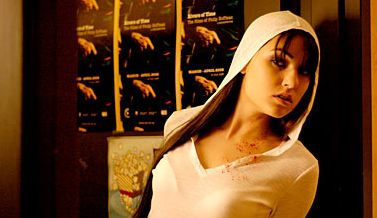
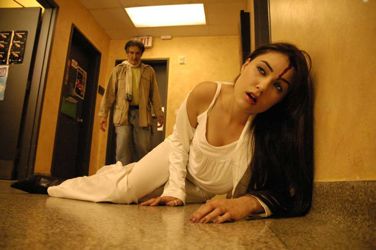
While her role in The Girlfriend Experience does allow her to bring her previous film experience to the part, no such boundaries have been blurred in Smash Cut. And neither of these films – her only two non-X-rated films to date – come close to the heights of genre-bending achieved by Oshima’s In the Realm of the Senses or, more recently, Catherine Breillat’s work with Italian porn king Rocco Siffredi.
I would like to give Sasha Grey the benefit of the doubt, and not simply treat her as an actress to be forever condemned by her involvement in the porn industry. If she can make the transition to narrative film, then more power to her. But so far I don’t see much potential. Soderbergh’s film played deliberately upon her status as porn actress. But Smash Cut seems happy simply to have her name on the marquee without engaging in any of the boundary-blurring Grey talks big about. And in the end, perhaps that’s a suitable enough homage to Lewis, known for his own strokes of marketing genius. It will be interesting to see if other filmmakers can blur the boundaries between porn and narrative cinema as Grey seems to want to do, or if Grey can step up her skills and become a good actress regardless of her screen pedigree. But neither of these scenarios is in evidence in Smash Cut. Aside from her, however, the film is nicely on the mark and makes a welcome continuation of the tradition pioneered by H.G. Lewis.

The Japanese pink film industry has spawned far more creative approaches to the blending of pornography with narrative film than anything on the North American market. This year’s festival featured a spotlight on the genre in conjunction with the release of a new book on the subject by Jasper Sharp. Included in the spotlight was the innovative Yariman. For my money, this entry by Rei Sakamoto, one of the new generation of pink filmmakers, turns out to have been one of the best films of the festival. Yariman, loosely translated as “slut,” follows couple Kenichi and Miki, their relationship crumbling, on a journey to bury the ashes of Kenichi’s former lover. The journey provides both partners the opportunity to explore their sexuality with others, making for an easy set-up for the genre’s mandated sexual episodes. But what makes this film stand apart from the crowd is the fact that almost none of the explicit sex on display here is glorified or titillating. Although there is no accounting for taste, particularly where sexual arousal is concerned, the film uses its set pieces as means towards exploring the emptiness, frustration, and jealousy that surrounds two partners cheating on each other for lack of spark in their own relationship.
The film begins as Kenichi runs into a former lover, Yoshiko. They have one last fling together before she dies in a car accident. Shortly after, in speaking to Yoshiko’s landlady, Kenichi learns that she had been very promiscuous in recent years, despite having stated otherwise on their date. Kenichi demonstrates a double standard in judging her harshly, but in the absence of any family he agrees to take Yoshiko’s ashes to her home town and bury them.
Miki learns of Kenichi’s transgression and is thrown into a state of outrage. “How come you can fuck her but not me?” she asks. His answer? “Even something as beautiful as a sunset is boring when seen every day.” Miki grudgingly agrees to come with him on the road trip to bury the ashes, and there they test the limits of their relationship. Miki makes various attempts to come to terms with her husband’s behaviour. In one particularly interesting scene, Miki decides she’s too uptight and comes on to a local café owner. She engages with him right on the table in the empty room, and this is cross-cut with shots of Kenichi sleeping with the owner of the hotel where they’re staying. In alternating between these two sexual acts we are invited to compare the differences in motivation: Miki is trying to adopt her husband’s perspective despite the fact that she’d rather have sex with him; Kenichi is in search of the lost spark he once had with Miki, but does not find its equivalent with his one-time stands. Later Miki admits to her escapade with the café owner, and this sparks Kenichi’s interest. At long last they copulate, but Miki is disturbed by Kenichi’s sudden interest resultant from her cheating, and wants to break up. She can’t understand why her sleeping with someone else turns him on.
In the film’s climax, the couple encounter Yoshiko’s former lover whose break-up with her apparently fueled her empty promiscuity. The man resists their attempts to get him to accept her ashes for a proper burial, wanting nothing to do with her. “I don’t love her anymore” he persists. In this confrontation Miki begins to identify with Yoshiko, discovering that her separation from her lover drove her to sleep with Kenichi, just as Miki’s own feelings of distance from her husband have driven her to sleep with other men. Her anger shifts towards Yoshiko’s former lover, and after they bury Yoshiko’s ashes Miki wants to reconcile with Kenichi. It seems the affection Kenichi has shown for Yoshiko in wanting to do her remains justice is a turn-on for Miki. They get back together, but agree to an open relationship. The film ends as they ride off on the bullet train, a long-take lingering on the empty station. Cut to a close-up of roses, then to a wide shot revealing that they are growing out of the gravesite where Yoshiko’s ashes are buried. The instability Yoshiko injected into Miki and Kenichi’s relationship has bloomed into new life, offering new possibilities for defining their relationship along different lines.
Yariman is not a film you would throw on for easy gratification. It is a film about sex rather than simply a film that puts sex on display. It seizes the opportunity to use the explicit nature of the pink film genre to comment intelligently upon the desires that drive the industry. The film is nicely shot with interesting flourishes of montage, and contains a message that frustrates the base instincts by positioning the sex on display within questions about what makes sexual relationships tick, the problems of possessive jealousy and empty lust, and the complexities of shifting identifications between partners. As a genre film, Yariman declares its independence by asking us to question why we would watch a pink film, commenting on the business that makes it possible in the first place.
For my money, the two best genre exercises this year were The House of the Devil and The Clone Returns Home, each of which targeted a very specific object of homage (early 80s suspense horror in the former and Tarkovksy’s Solaris in the latter), and hit them on the mark dead center.
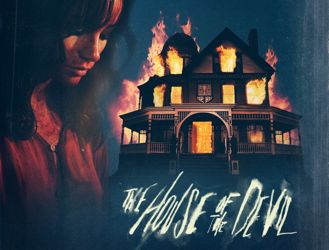
If Rage (presented at Fantasia 2007) sought to bring 80s latex-based gore effects back to the 21st Century, Ti West’s The House of the Devil sets its sights on another lost dimension of 80s horror: pace. This is a film that revels in the slow burn. Set in the early 80s, a young college student played by newcomer Jocelin Donahue takes a “babysitting” job at a creepy mansion where, as she eventually discovers, the owner (played by 80s veteran Tom Noonan) has very special plans for her beneath a rare lunar eclipse.
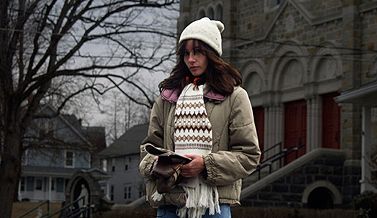
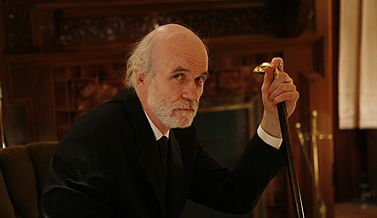

A good portion of the film is spent following her around the house, slowly, as the little things start to creep her out. A creaking sound here, a moving shadow there, and nobody picking up on the other end of the phone when she finally gets scared enough to call for backup.

The film’s art direction is splendid in its attention to both period details and the necessities of the genre, and on that level I would place West’s execution in the same league as Mary Harron’s American Psycho and the Cohen Brothers’ No Country for Old Men, two of the best 80s period pieces to date. Importantly, the film’s homage to an era is well grounded in the early portion of the decade, a time when the 70s still infused much of the style before the more stereotypically ostentatious late-80s fare took over. Donahue even bears a certain resemblance to Jessica Harper of late ‘70s Suspiria fame, and the film’s pacing owes much to the moodiness of 70s American fare that so informed the burgeoning horror filmmakers at the turn of the decade. And when the long coiling spring of tension is finally released, the film becomes no holds barred, channeling the climax of Rosemary’s Baby into an artfully restrained bloodbath.
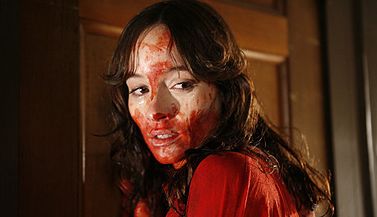
On the phone from another shoot during the Q+A, West told the Fantasia crowd that the version we saw had three minutes cut after a focus group found its pace a little too slow. Indeed, today’s crowds are more likely to embrace the faster end of the spectrum. But even in its slightly abridged form, The House of the Devil remains committed to a recreation of the kind of cinema that got West into the business, and which so many of us grew up on. It was a blast from the past, but all the more timely for being so. As a meditation on genre, The House of the Devil is spot on.
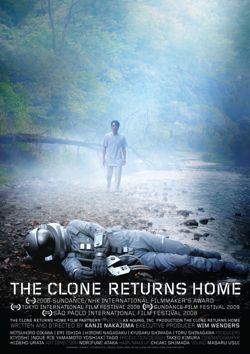
Good as The House of the Devil was, however, my pick of the festival this year is Kanji Nakajima’s The Clone Returns Home, a film whose pace makes The House of the Devil seem like a rollercoaster ride by comparison. Not only does it take on the science-fiction genre, but also bears the tremendous burden of an homage to Andrei Tarkovsky’s Solaris – and sustains both with aplomb. The storyline is sparse: an astronaut hovers in orbit around the Earth when an unspecified accident cuts his life line and sets him floating free. Having agreed to a cloning procedure that would allow the authorities to create an identical body and infuse it with his life experiences, he is granted a second lease on life. Upon waking, however, the clone is inconsolably distraught over the memories of his twin brother who died when they were young boys playing together in a stream. He goes off in search of his childhood home to reconcile himself with these memories. Meanwhile, having considered the first cloning a failure, the science team creates a new clone who awakes apparently free of these issues. Upon hearing of his previous clone’s flight, however, he sets off to find him. Arriving at his childhood home, he finds the first clone dead for many weeks, and must here face burying another twin, forcing a confrontation with memories of his own.
The film pays clear homage to Tarkovsky in terms of both aesthetic and thematic content. Aesthetically, Clone and Solaris each boast the perhaps dubious distinction of being science fiction films with very little emphasis on science. Solaris, at least, takes place in large part on a space station; Clone barely even has that, with only a couple early exterior shots of a space station orbiting the Earth with Kohei in a space suit floating just outside.

The rest of the film takes place either in the labs, denoted by a vaguely “futuristic” sterility that is more a throwback to the 1950s view of the space age, or decidedly pre-modern rural landscapes through which Kohei drags the wonderfully retro spacesuit in which he died.

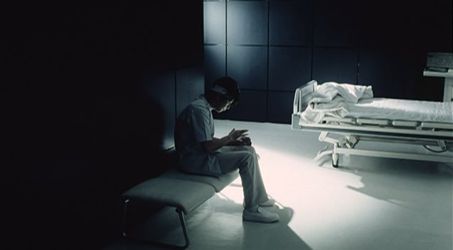

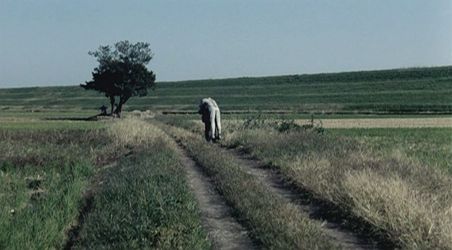
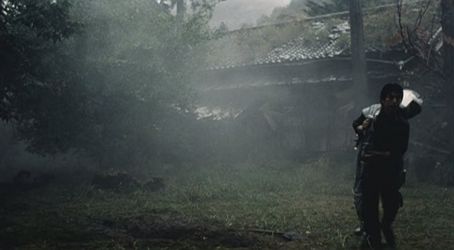
Clone also nods to Solaris, and Tarkovsky in general, through a long-take aesthetic that defies realist conventions of spatio-temporal containment, presenting worlds in which the fantastical can happen before our very eyes at any moment. And Clone makes use of an approach to sound design that creates a simultaneous grounding within the world of the characters and a fantastical world that threads their subjective experience through to the impossible world of memory (for more on the film’s use of sound, see my analysis of the film elsewhere in this issue).
Combined with these aesthetic treatments, Clone??’s languid pace and reflective narrative create an environment quite similar to Tarkovsky’s treatment of the novel by Stanislav Lem, a sparse cinematic reflection on the ethics of scientific progression. Like ??Solaris, Clone concerns the problems of loss, and the physical manifestation of the interior experience of loss through advancements in science. For the space station orbiting the Solaris cloud in Tarkovsky’s film, this means that lost family members become real again, forcing the astronauts to confront their difficult memories in the real space of the station. In Clone, it is the technology of bio-duplication that causes the dead to come back to life, forcing loved ones left behind to deal with this artificial reincarnation, and for the reincarnated to deal with their own losses past. Clone very cleverly combines the story of twin brothers separated by accidental death with the story of the genetic reincarnation of the surviving twin, effectively rejoining the twins when the second clone eventually catches up with the first. Ultimately, however, the first clone dies before the second finds him, and the pain of loss must be suffered all over again. It is this suffering through loss that defines humanity in the film, and its presence in the heart of the clones raises the film’s main scientific question: how human are these clones, and can they effectively extend the lives of the originals who have been lost? It is an incredibly beautiful film, perfect in its execution and tender in its exploration of the long-term effects of loss. And in its clear nod to Tarkovsky, the resonance of Kohei’s soul suffering the loss of his brother extends to the resonance of our own spirits suffering the loss of one of the world’s great filmmakers, allowing us to ponder the nature of homage while fully immersed in a story both brand new and decidedly old. It is these qualities that make the sadness that permeates the film resonate through the machinations of genre cinema in which each new entry always, in some way, marks the death of its predecessors that necessitates the new lives to follow.



